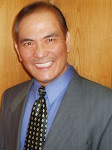 A HEALTHCARE-RELATED CAREER OR NOT? THINKING DEFENSIVELY...The current economic and financial crisis made me think about careers. If I were a high school or college student should I consider a healthcare-related career? And if not, what other industries look promising?Four reasons come to mind:
A HEALTHCARE-RELATED CAREER OR NOT? THINKING DEFENSIVELY...The current economic and financial crisis made me think about careers. If I were a high school or college student should I consider a healthcare-related career? And if not, what other industries look promising?Four reasons come to mind:First, a career in healthcare is recession-resistant. For at least the next 15 to 20 years, as baby boomers age, the demand for physicians, nurses, and all the other allied healthcare professions will be strong.
Second, this is a rewarding career if you enjoy the feeling of satisfaction when you help someone.
Third, all healthcare professions pay well. Physicians are typically at the top of the pyramid. They earn the most money but they also work the hardest and they have to commit to a lifetime of learning. As with most things, your compensation is proportionate to your skills and ambition.
Fourth, healthcare offers many choices.
WHAT RECESSION-RESISTANT MEANS & WHY IT'S IMPORTANTThe following chart, created by a prestigious consulting firm, shows how different industries have performed during recessions. Any industry connected with those activities that show an increase in spending is more resistant to recession than average.
(You can enlarge the image by clicking on it. To return to this page, click on the left arrow of your browser or press the “Backspace” button on your keyboard.)
These are the five activities that show a spending increase during tough times:
- Education
- Reading
- Personal Insurance
- Healthcare
- Food at home (as opposed to dining out)
A recession-resistant job is important because it provides you with that extra margin of security during tough times.
 MORE INFORMATIONOffice of Science Education (OSE)
MORE INFORMATIONOffice of Science Education (OSE)The OSE is a section of the National Institute of Health. This links you to an excellent base for exploring various
science-based careers.
The webpage offers a well-designed
career finder tool. It sifts through 128 possibilities and creates a list of jobs for you to explore based on your interests and skills. This is a comprehensive tool that isn’t limited to healthcare professions.
- Architecture & Engineering
- Arts, Design, Entertainment, Sports, & Media
- Business & Financial Operations
- Community & Social Services
- Computer & Mathematical
- Education, Training, & Library
- Healthcare Practitioners & Technical
- Healthcare Support
- Installation, Maintenance, & Repair
- Legal
- Life, Physical, & Social Science
- Management
- Office & Administrative Support
- Personal Care & Service
- Production
- Sales & Related
- Transportation & Material Moving
Health Professions NetworkThis is a group of health care professionals who represent the diverse specialties of allied health professions, including provider organizations, educators, accreditors, credentialing agencies and administrators. Jump directly to this specific page: Students Interested in Health Care Careers.
Their website contains a comprehensive list of links to healthcare-related organizations at this page.
National Association of Advisors for the Health Professions
The is an organization of over 900 health professions advisors at colleges and universities throughout the United States. Their website also contains a comprehensive list of links to healthcare-related organizations at this page.
Health Opportunities for Today and Tomorrow (MHOTT)
This site is aimed at high school students. Although the site was created and is maintained by the Michigan Health Council, its information is useful for any high school student.
The last site, Health Occupations Students of America (HOSA), belongs to a national student organization endorsed by the U.S. Department of Education. (That means financial aid!) HOSA's goals are to promote career opportunities in healthcare and, in doing so, enhance the delivery of quality healthcare to all people.
Since the site is endorsed by the U.S. Department of Education, it also links to other websites focused on other industries. This will link you to Career Voyages, a site for these industries:
- Advanced Manufacturing
- Aerospace
- Automotive
- Business
- Construction
- Education
- Energy
- Financial Services
- Health Care
- Homeland Security
- Hospitality
- Information Technology
- Retail
- Transportation
This site has a section for people changing careers. Quoting from this page:
In today’s world, there are never any guarantees, but some careful planning may help ensure that you make choices that can give you more security for your future.
If you have already been in the workforce for some time, you probably already know that it is always changing. You know how important it is to know what’s around the bend. Career Voyages is here to try and help you do that.
Those industries above were chosen since they are expected to either need the most employees or are evolving and creating new jobs.
In short, these industries were selected for three reasons:
- they are projected to add substantial numbers of new jobs to the economy or affect the growth of other industries;
- they are existing or emerging businesses being transformed by technology and innovation requiring new skills from workers;
- they are economically vital to the overall health of the American economy.
Go ahead and explore.
Invest in your future by spending some time planning for it. Makes sense, right?
Good luck!
 MEDICAL SCHOOL FOR FREE?
MEDICAL SCHOOL FOR FREE?







